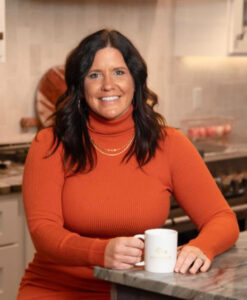With a financial boost from an AARP grant, Quad City Area REALTORs (QCAR) is rolling out a new design contest aimed at helping draw local awareness and interest in an emerging housing option – accessory dwelling units.

As the population continues to grow and age, communities are giving a closer look at expanding their housing stock with a variety of strategies including ADUs. An ADU is a secondary residential unit that shares a lot with a larger, primary home.
Sharon Smith, the local Realtor association’s CEO, said QCAR developed the idea of a design contest to draw more attention to this alternative housing option. She said such units can aid a homeowner in creating rental income, or provide living space for an adult child or an aging parent.
“A lot of people don’t even know ADUs exist,” Ms. Smith said, adding that in the western U.S. there’s a growing trend for these smaller, more affordable, basic homes. “We certainly have (housing) inventory issues, so I think we need to be looking at alternatives.”
Such units, often referred to as “granny flats,” “in-law suites,” or “backyard cottages,” can be attached to the main house, detached or even converted from an existing structure such as a garage.
Realtor Amanda Yeggy, QCAR board president-elect, said AUDs are beginning to create a small buzz in the Quad Cities as various local governments begin to consider and debate rules regarding their construction.
“It’s not really a tiny home,” Ms. Yeggy, a Realtor with Navigate Realty in Davenport, told the QCBJ. “It can be attached or detached from the main home.”
Showcasing ADU designs
Ms. Smith said the contest will be open to both industry professionals – such as architects, builders and designers – as well as students who are currently enrolled in high school, college or a trade school. The top designs also will receive cash prizes.
For more contest information including the rules, visit QCAR’s website here.
The deadline for entries is Tuesday, Sept. 30. Winners will be announced Wednesday, Oct. 22, at a public event.
All designs must adhere to state laws (check QCAR rules for more information). The designs must contain all the traditional elements of an ADU including a kitchen, bathroom and sleeping area.
They will be evaluated on universal design, construction/design, context and presentation.
Once selected by a panel of industry leaders, the top 12 winning designs will be posted on QCAR’s website and downloadable for the public.
Along with Ms. Yeggy, the other co-chair of the design contest committee is Jen Peters of Ruhl&Ruhl Realtors. The QCAR staff project manager is Becca Poirier.
Contest organizers hope to attract as many as 50 design ideas total.
Goal long-term change
The new initiative has long been an idea among QCAR leaders, but it became a reality when the Bettendorf-based association won an AARP Community Challenge grant in late June. The design contest was one of 383 winners AARP selected this year for its Community Challenge grants. Recipients, including QCAR, were selected from a pool of more than 3,450 applications from all 50 states.
Now in its ninth year, this year’s AARP Community Challenge awarded its largest number of grants ever.
Since its launch in 2017, it has funded 2,100 grants and invested $24.3 million in 45,000 improvements. They include park benches, crosswalks, bike racks. It also boosted more than 8,000 community-based programs.
The funding, AARP said on its website, sparks long-term change in areas such as public places, transportation, housing, digital connectivity, and community resilience. This year, the initiative awarded a total of $4.2 million in these quick action grants.
All winning projects were focused on meeting the needs of adults age 50 and older. In addition, $2 million, or 45% of the total dollars in grants, will fund projects in rural communities, which also makes it AARP’s largest rural investment to date.
With the $15,000 AARP grant award, QCAR can offer the prize money to incentivize more people to submit ADU designs. Prize awards will vary in the two categories, professional and student. The professional prizes range from $4,000 for first place to $2,000 for second and $1,000 for third. In the student category, the respective prizes are $2,500, $1,000 and $750.
How designs will help
“The main goal is that these ideas would be out there so people could maybe pursue them,” she said. There also are preliminary discussions about having one of the designs actually built so those who are interested in ADUs could see one in person.
“Maybe we wouldn’t build the whole thing, but maybe build the design of it, the floor design or something so people could walk in and feel the space,” Ms. Smith said.
While other parts of the country – particularly Arizona and California – are embracing the ADU movement, Ms. Yeggy said there really hasn’t been homebuyers or clients asking for them much here locally yet.
In the Southwest, the ADUs are called casitas, which is Spanish for small house.
Ms. Yeggy said she personally could benefit from having an ADU at her home. “I have a daughter that’s going to graduate college in a year and she could move into one if I had one.’’ In addition, her mother is looking to downsize soon and find new living arrangements.
“So there’s definitely a need (for these),” she said. “I just think the awareness piece is what’s missing.”
ADU interest growing
According to Ms. Smith, ADU interest could increase now that the State of Iowa passed recent legislation that says communities and municipalities “cannot put on restrictions for ADUs any more than they do for single-family homes.” Essentially, zoning rules cannot be more strict for an ADU than a traditional house.
As of July 1, Iowa Senate File 592 requires cities and counties to allow at least one ADU per single-family lot.
The State of Illinois has introduced similar legislation but the measure has not been passed yet. However, she said individual communities are updating their zoning rules to support ADUs including Moline. Chicago lifted its ADU ban in 2020 and launched a pilot program.
But Ms. Smith believes the best alternative would be for a uniform, statewide code so that “municipalities can’t start picking and choosing what they want to do.”
“I think it’s like anything, it’s going to take awhile to build interest,” she said.
But she believes as more families face the need for care for their elderly family members and explore the costs of various options such as assisted living, memory care and more, she thinks ADUs will become much more attractive.
“If a family looks at that, or looks at an ADU as a rental or something, I think it’ll start getting people thinking about alternative housing opportunities,” Ms. Smith said.








